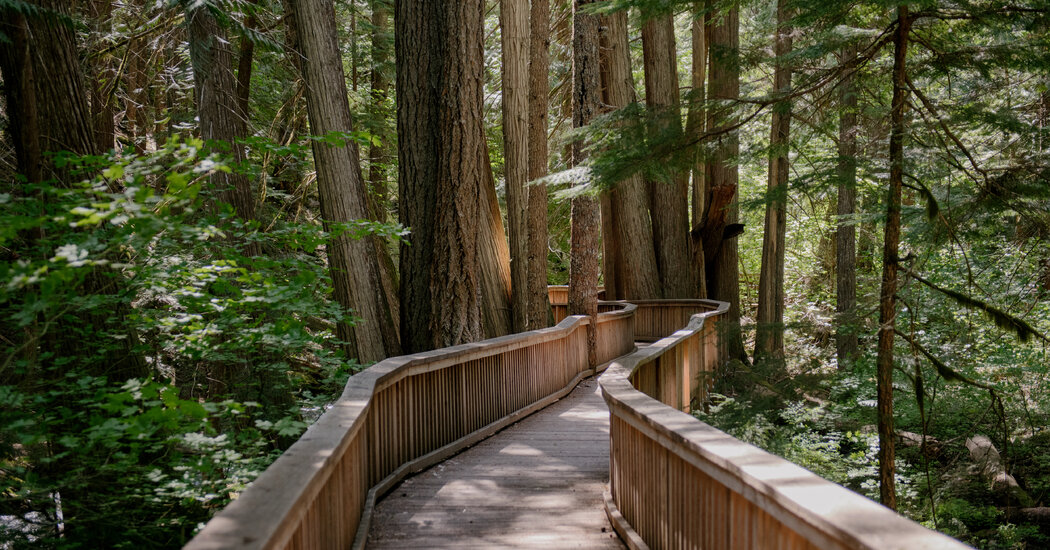I was well into adulthood when I realized that hiking was an activity that I could participate in. I grew up with multiple disabilities and chronic illnesses and thought being “outdoorsy” was only for able-bodied people. I couldn’t find information about hiking as a disabled person, so I spent a lot of time trying to figure it out for myself.
Accessibility is improving, but there is no one-size-fits-all solution. Different disabilities — and even people with the same disability — have different needs. For instance, I look for trails that don’t have long inclines or obstacles like big rocks and steep stairs, are shady and wide enough to use a cane or trekking poles, and have benches or places to rest (I often bring a collapsible chair).
Wheelchair accessibility, in particular, means different things. A truly wheelchair-accessible trail is flat, wide and has a firm surface with no obstacles. Trails with steeper, more rugged sections may be an option for experienced outdoor-wheelchair users or those using all-terrain chairs. I refer to these trails as wheelchair hikeable.
For many travelers with disabilities, much depends on a trail’s grade or slope. You can often find this information, expressed as a percentage, on park websites or trail apps. A slope over 12 percent may be difficult for people with mobility or cardiopulmonary concerns, and inaccessible for most wheelchair users. Other considerations include tactile signage and maps, which have raised elements for exploration by touch; accessible parking; and excessive or unexpected noises, which can lead to sensory overload for people with sensory-processing disorders.
Access to nature is so important for our well-being. Everyone deserves to experience it — and those with disabilities can on these accessible summer adventures.
California
Northern California’s redwood country is one of my favorite places. Coast redwoods are the world’s tallest trees, and one can’t help but feel humbled by them. Redwood National and State Parks, which are in Yurok and Tolowa ancestral territory, include forests, prairie ecosystems and coastline, much of it accessible.
These trails, designed for people who use wheelchairs and other mobility aids, and for people who are blind or have low vision, combine to create a three-quarter-mile loop that begins at the Prairie Creek Visitors Center in Prairie Creek Redwoods State Park, part of the Redwood National and State Parks system. The Access trail winds beneath…
Click Here to Read the Full Original Article at NYT > Travel…
